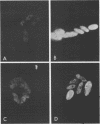Abstract
Antigens associated with the Epstein-Barr virus (EBV) replicative cycle were found in the nucleus and cytoplasm of human placental, Vero, BSC-1, and owl monkey kidney cells transfected with EBV DNA prepared from several different strains of virus. The number of antigen-positive nuclei increased when transfection was followed by cell fusion induced by inactivated Sendai virus. About 1,200 antigen-positive foci were induced per micrograms of EBV DNA. On the basis of their reactivity with various well-characterized human sera, it appears that the antigens are part of the early antigen complex. None of the four restriction endonucleases, EcoRI, HindIII, SalI, and BamHI, destroyed the ability of EBV DNA to induce early antigen. However, only SalI seemed to leave intact the full spectrum of antigen expression by the HR-1 and FF41 strains of EBV DNA. By means of transfection with recombinant DNA plasmids containing different EBV (FF41) DNA fragments regenerated by EcoRI, we showed that the coding region for early antigen was at least partially contained on the 17.2-megadalton EcoRI B fragment.
Full text
PDF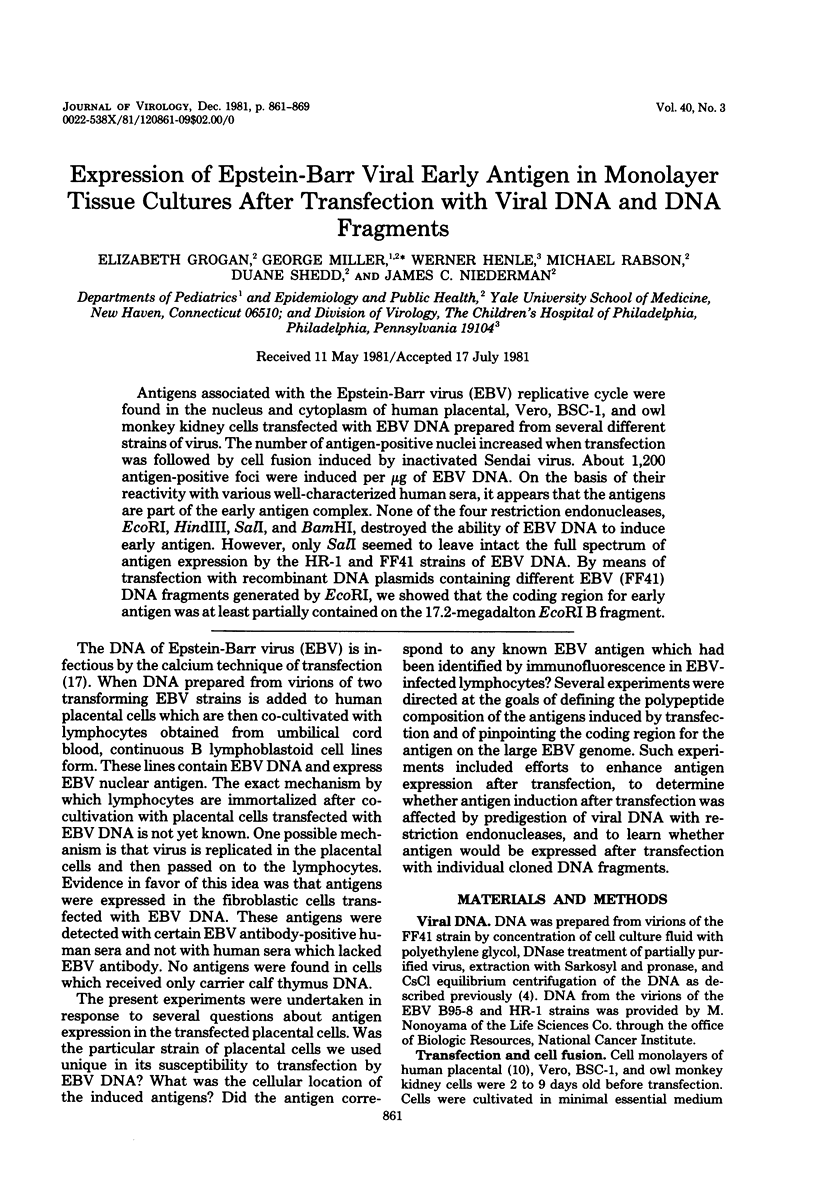
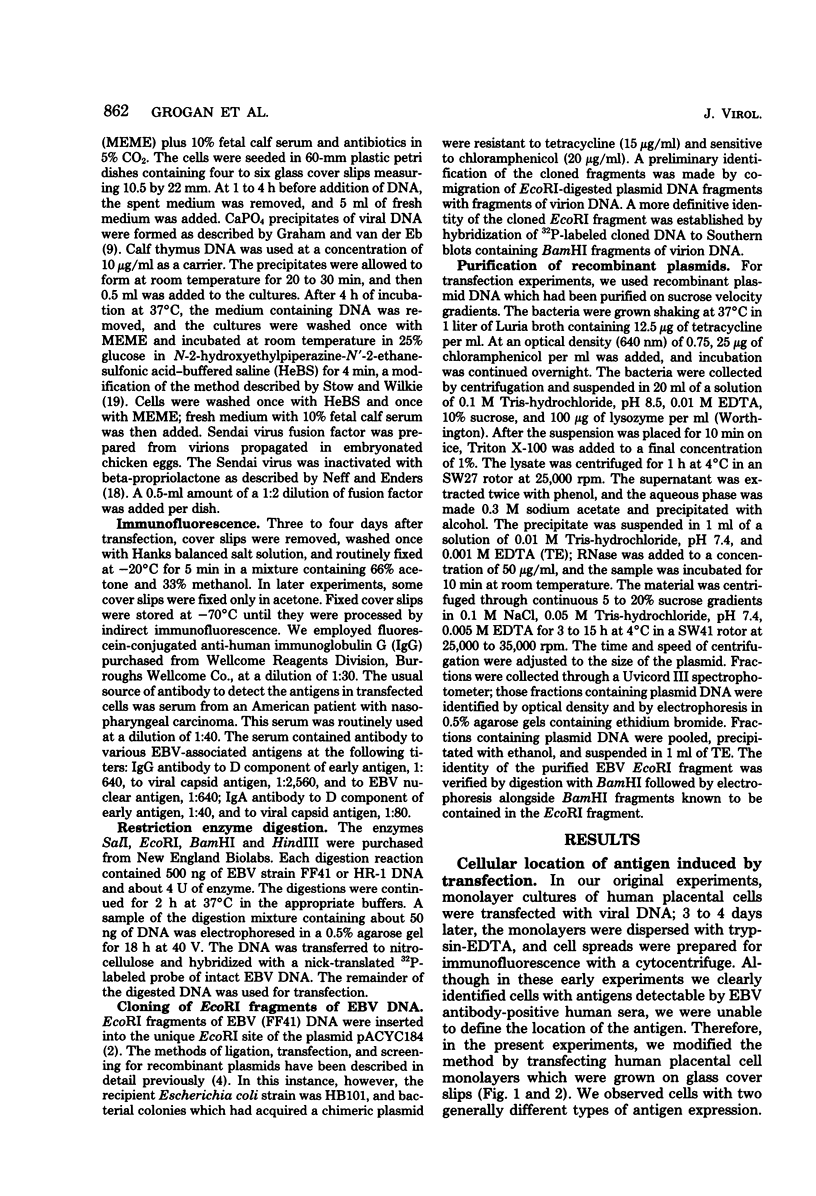
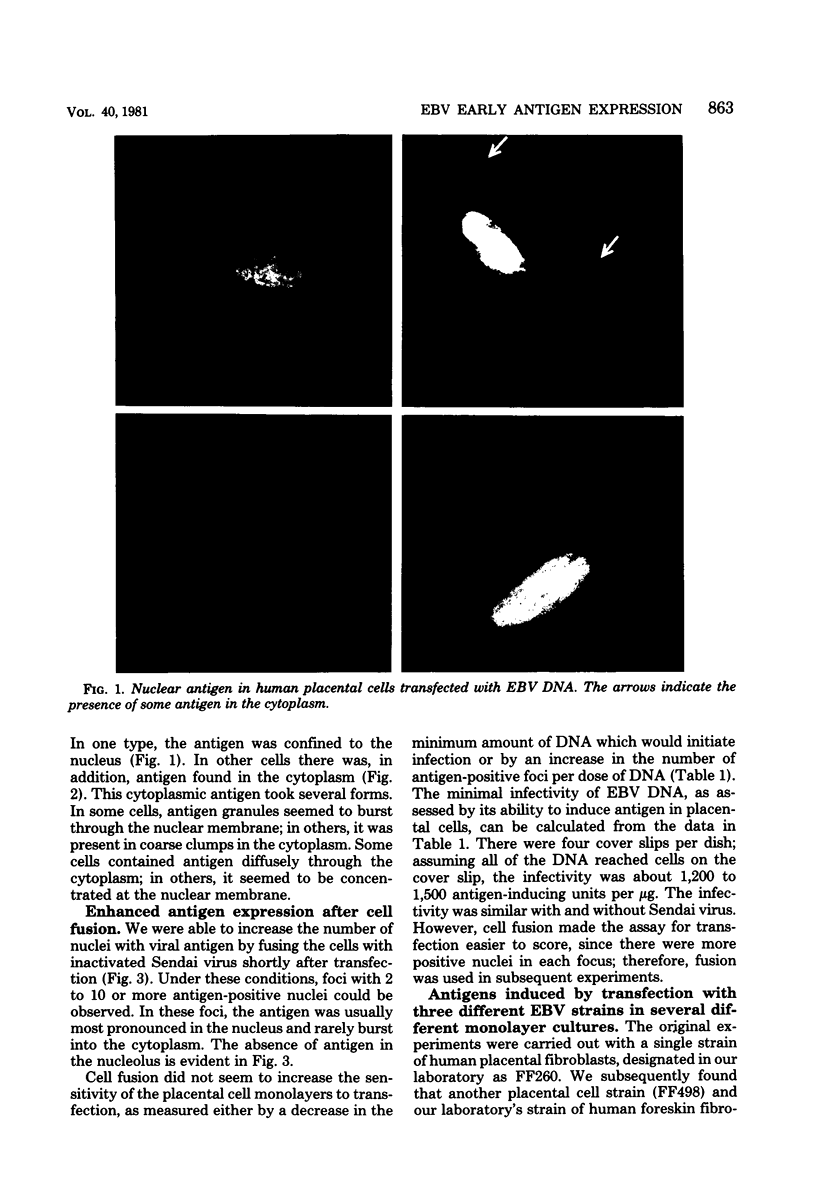
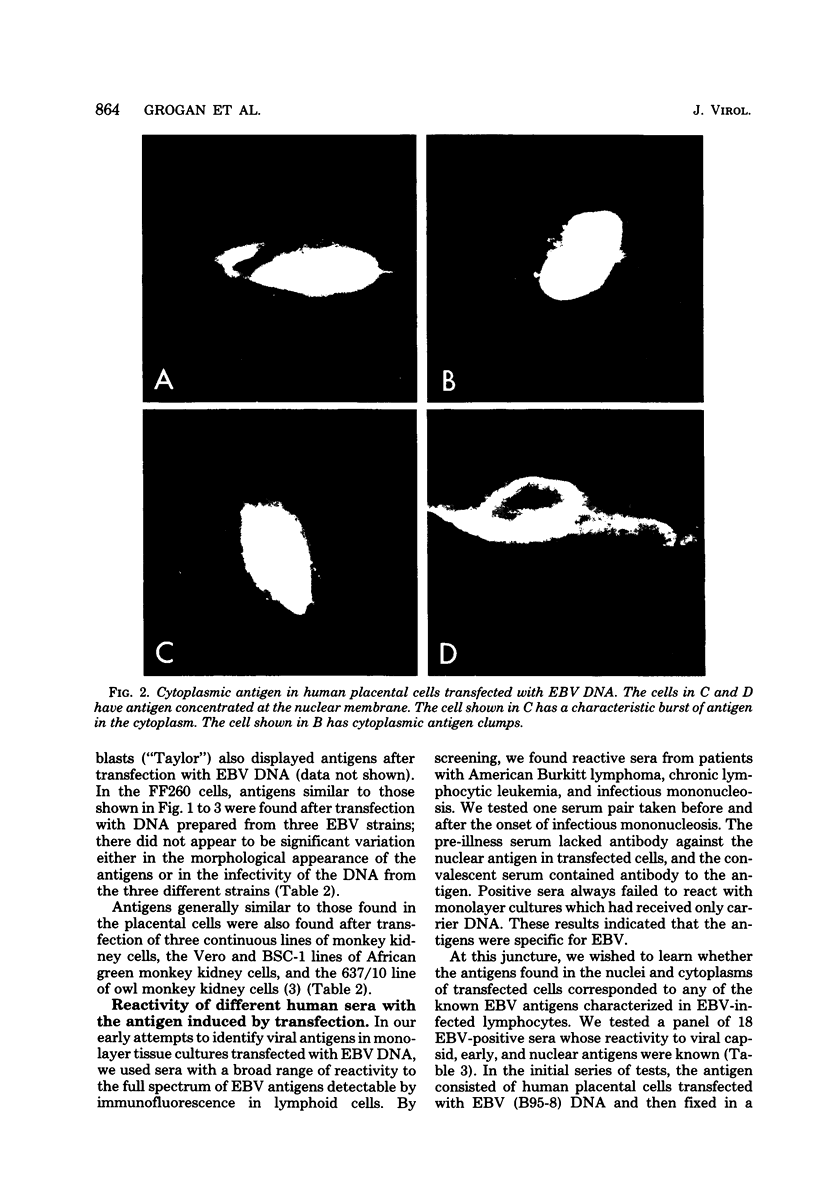
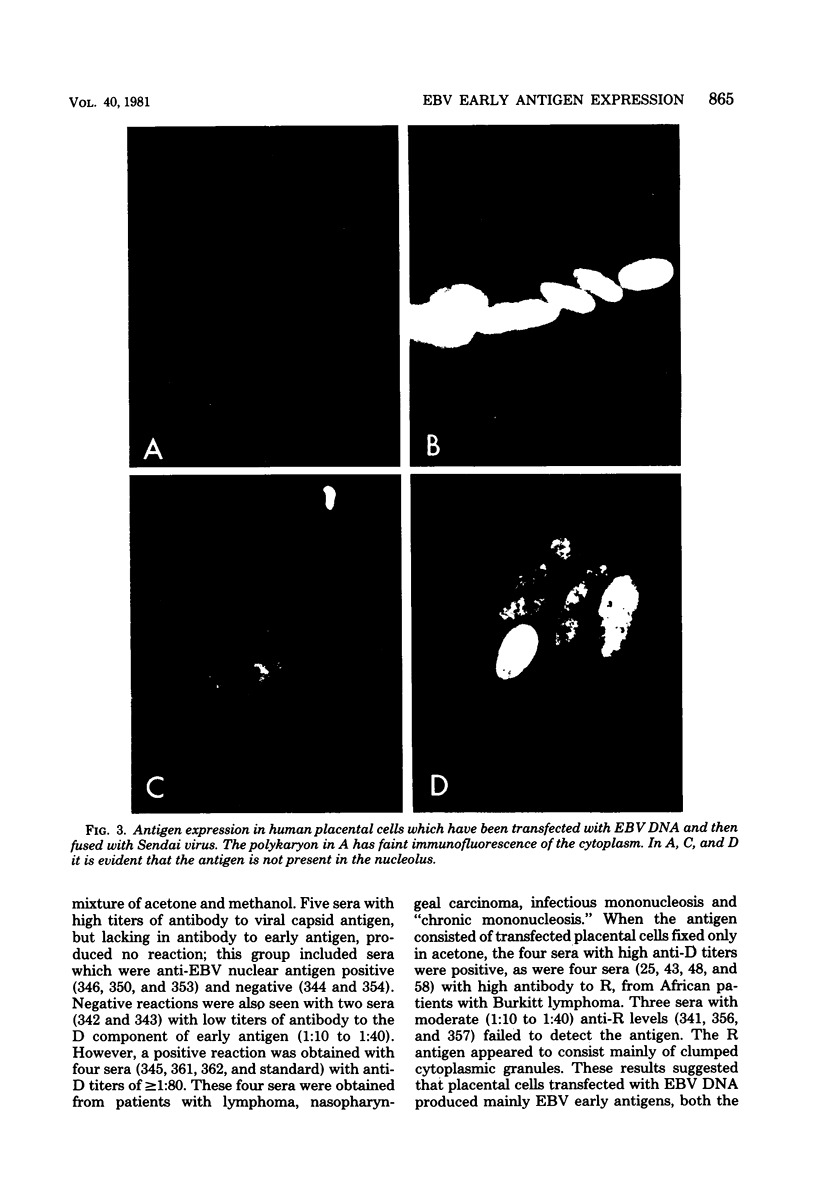
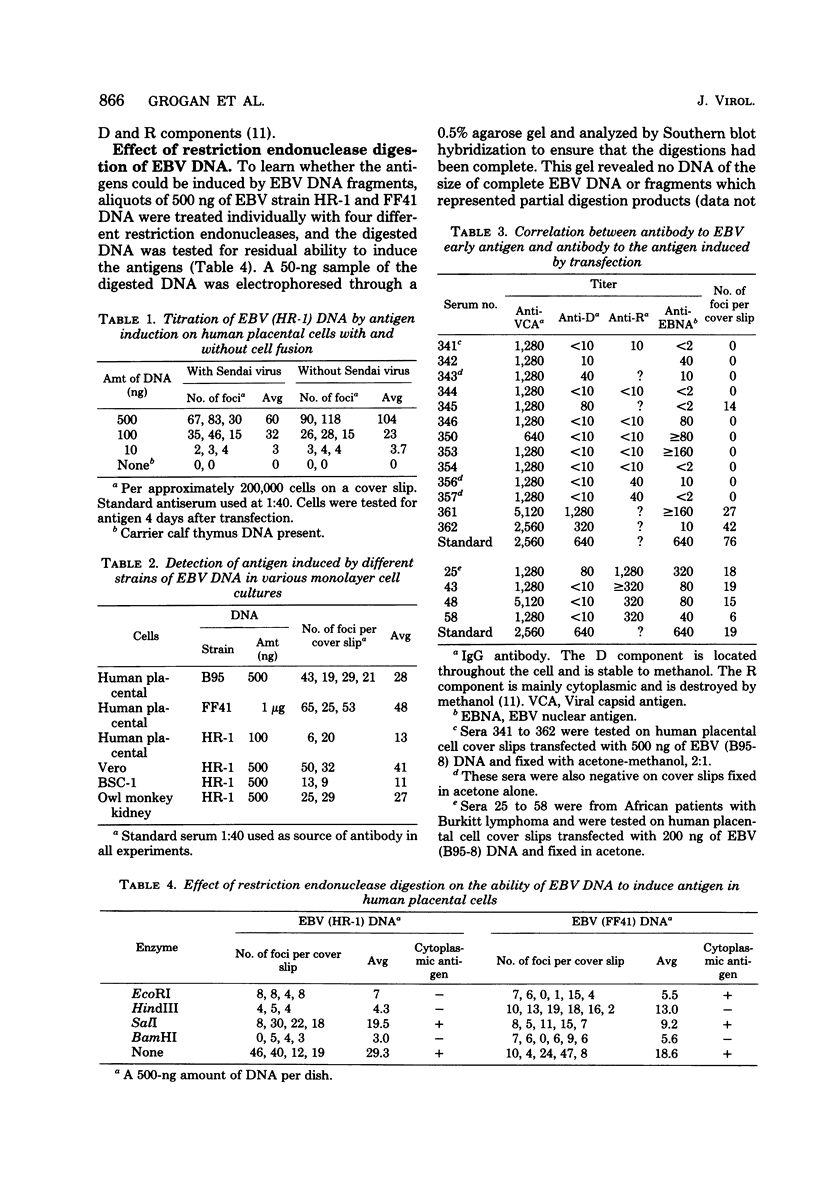
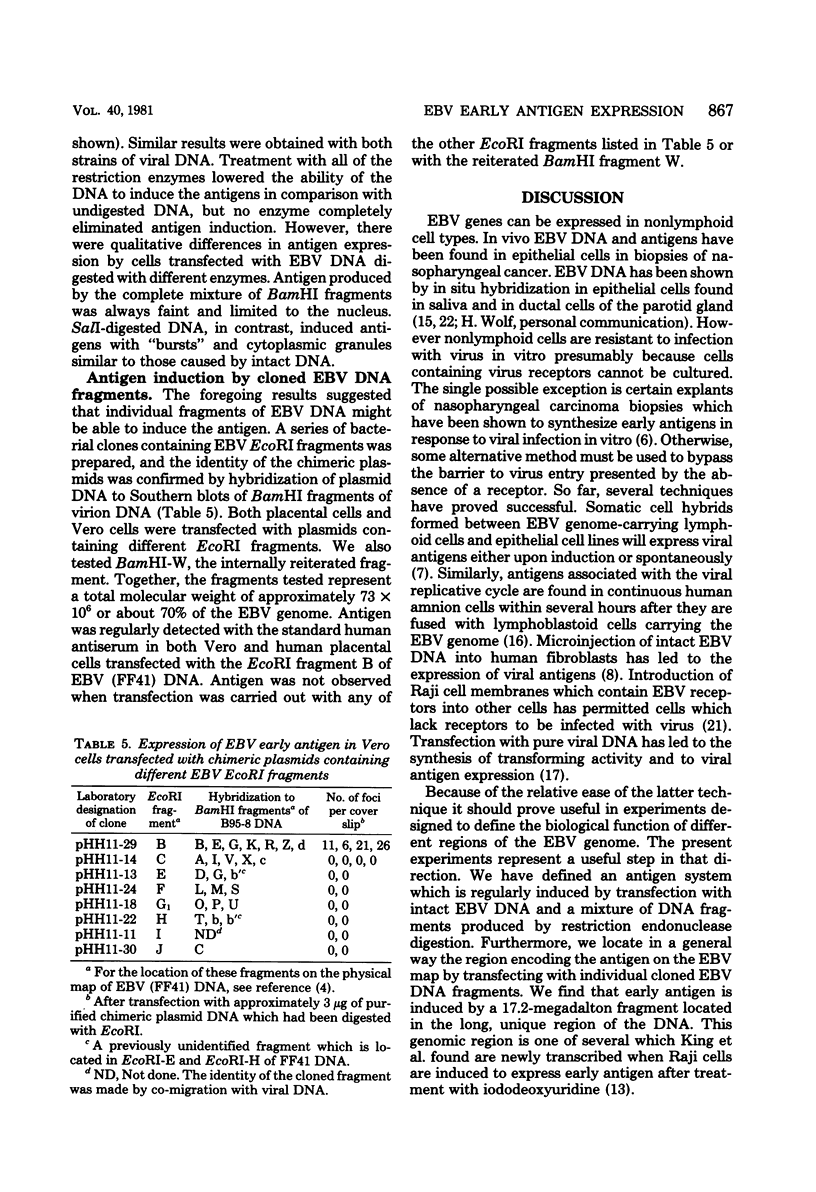
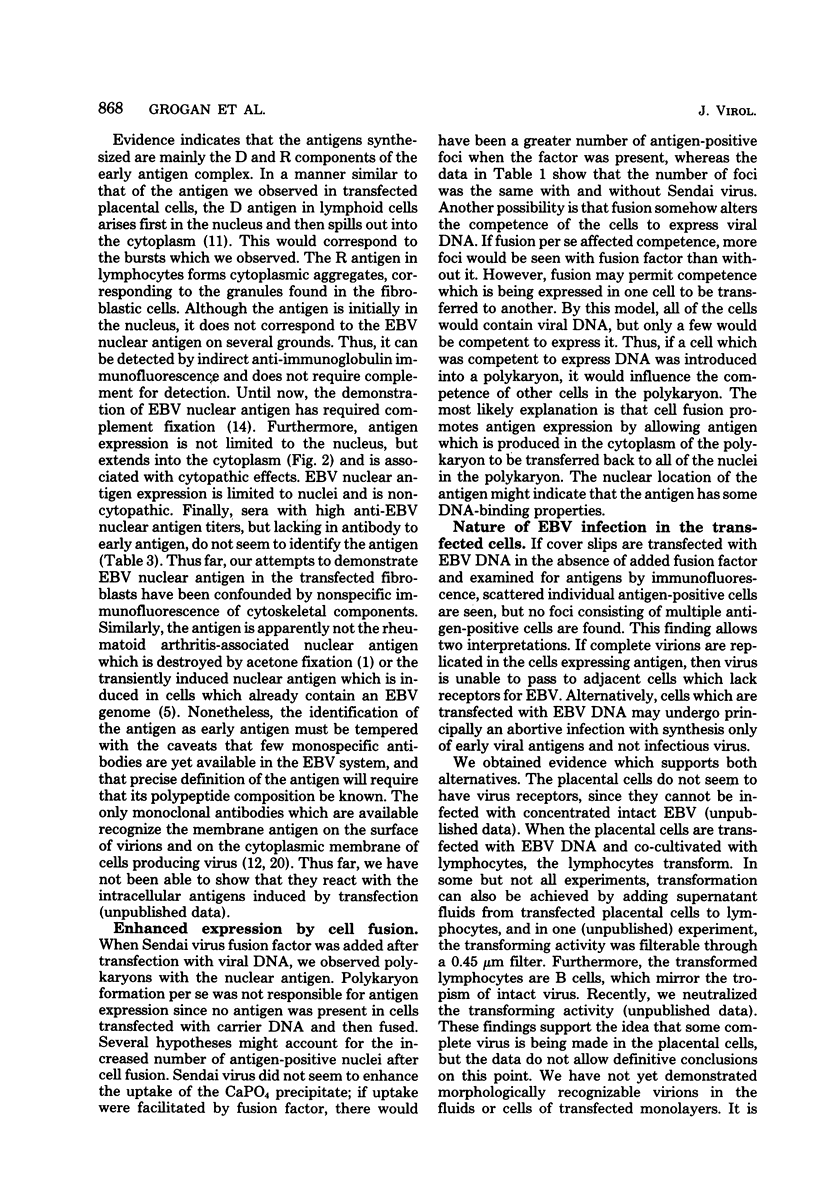
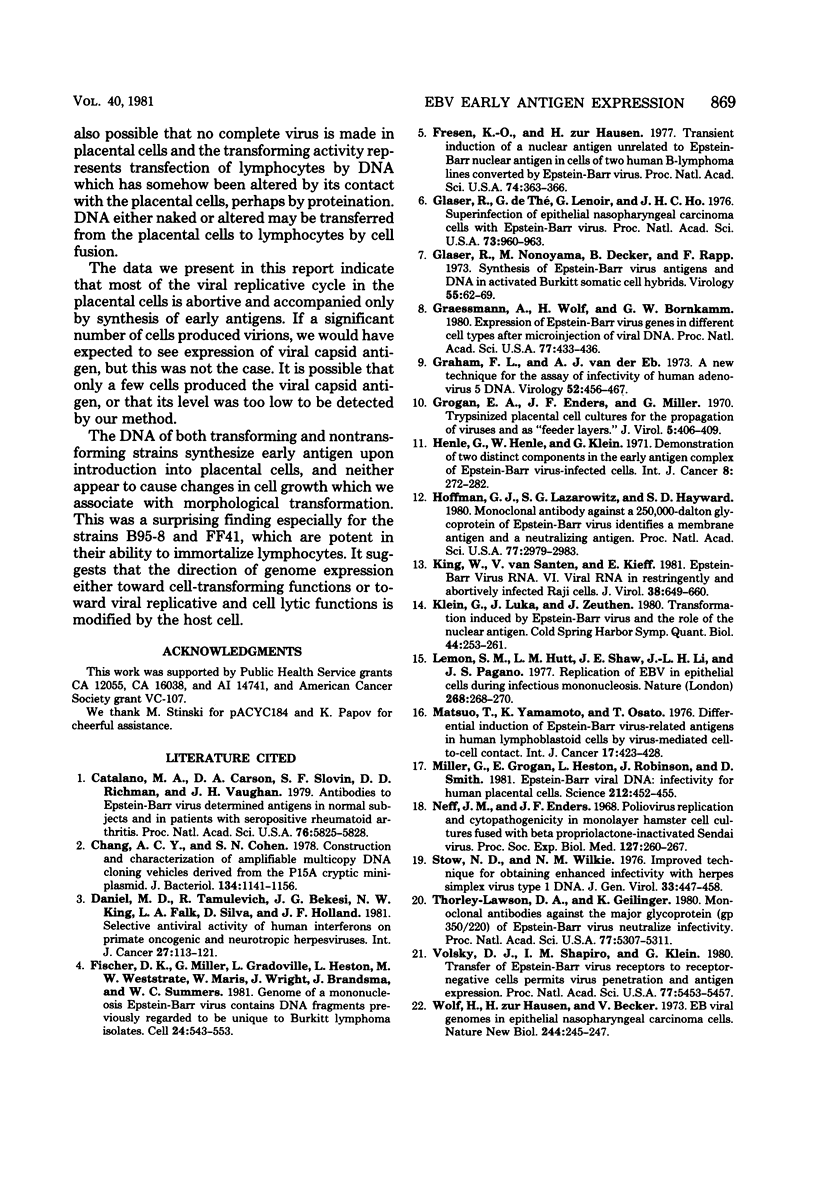
Images in this article
Selected References
These references are in PubMed. This may not be the complete list of references from this article.
- Catalano M. A., Carson D. A., Slovin S. F., Richman D. D., Vaughan J. H. Antibodies to Epstein-Barr virus-determined antigens in normal subjects and in patients with seropositive rheumatoid arthritis. Proc Natl Acad Sci U S A. 1979 Nov;76(11):5825–5828. doi: 10.1073/pnas.76.11.5825. [DOI] [PMC free article] [PubMed] [Google Scholar]
- Chang A. C., Cohen S. N. Construction and characterization of amplifiable multicopy DNA cloning vehicles derived from the P15A cryptic miniplasmid. J Bacteriol. 1978 Jun;134(3):1141–1156. doi: 10.1128/jb.134.3.1141-1156.1978. [DOI] [PMC free article] [PubMed] [Google Scholar]
- Daniel M. D., Tamulevich R., Bekesi J. G., King N. W., Falk L. A., Silva D., Holland J. F. Selective antiviral activity of human interferons on primate oncogenic and neurotropic herpesviruses. Int J Cancer. 1981 Jan 15;27(1):113–121. doi: 10.1002/ijc.2910270118. [DOI] [PubMed] [Google Scholar]
- Fischer D. K., Miller G., Gradoville L., Heston L., Westrate M. W., Maris W., Wright J., Brandsma J., Summers W. C. Genome of a mononucleosis Epstein-Barr virus contains DNA fragments previously regarded to be unique to Burkitt's lymphoma isolates. Cell. 1981 May;24(2):543–553. doi: 10.1016/0092-8674(81)90345-7. [DOI] [PubMed] [Google Scholar]
- Fresen K. O., zur Hausen H. Transient induction of a nuclear antigen unrelated to Epstein-Barr nuclear antigen in cells of two human B-lymphoma lines converted by Epstein-Barr virus. Proc Natl Acad Sci U S A. 1977 Jan;74(1):363–366. doi: 10.1073/pnas.74.1.363. [DOI] [PMC free article] [PubMed] [Google Scholar]
- Glaser R., Nonoyama M., Decker B., Rapp F. Synthesis of Epstein-Barr virus antigens and DNA in activated Burkitt somatic cell hybrids. Virology. 1973 Sep;55(1):62–69. doi: 10.1016/s0042-6822(73)81008-6. [DOI] [PubMed] [Google Scholar]
- Glaser R., de Thé G., Lenoir G., Ho J. H. Superinfection epithelial nasopharyngeal carcinoma cells with Epstein-Barr virus. Proc Natl Acad Sci U S A. 1976 Mar;73(3):960–963. doi: 10.1073/pnas.73.3.960. [DOI] [PMC free article] [PubMed] [Google Scholar]
- Graessmann A., Wolf H., Bornkamm G. W. Expression of Epstein-Barr virus genes in different cell types after microinjection of viral DNA. Proc Natl Acad Sci U S A. 1980 Jan;77(1):433–436. doi: 10.1073/pnas.77.1.433. [DOI] [PMC free article] [PubMed] [Google Scholar]
- Graham F. L., van der Eb A. J. A new technique for the assay of infectivity of human adenovirus 5 DNA. Virology. 1973 Apr;52(2):456–467. doi: 10.1016/0042-6822(73)90341-3. [DOI] [PubMed] [Google Scholar]
- Grogan E. A., Enders J. F., Miller G. Trypsinized placental cell cultures for the propagation of viruses and as "feeder layers". J Virol. 1970 Mar;5(3):406–409. doi: 10.1128/jvi.5.3.406-409.1970. [DOI] [PMC free article] [PubMed] [Google Scholar]
- Henle G., Henle W., Klein G. Demonstration of two distinct components in the early antigen complex of Epstein-Barr virus-infected cells. Int J Cancer. 1971 Sep 15;8(2):272–282. doi: 10.1002/ijc.2910080212. [DOI] [PubMed] [Google Scholar]
- Hoffman G. J., Lazarowitz S. G., Hayward S. D. Monoclonal antibody against a 250,000-dalton glycoprotein of Epstein-Barr virus identifies a membrane antigen and a neutralizing antigen. Proc Natl Acad Sci U S A. 1980 May;77(5):2979–2983. doi: 10.1073/pnas.77.5.2979. [DOI] [PMC free article] [PubMed] [Google Scholar]
- King W., Van Santen V., Kieff E. Epstein-Barr virus RNA. VI. Viral RNA in restringently and abortively infected Raji cells. J Virol. 1981 May;38(2):649–660. doi: 10.1128/jvi.38.2.649-660.1981. [DOI] [PMC free article] [PubMed] [Google Scholar]
- Klein G., Luka J., Zeuthen J. Transformation induced by Epstein-Barr virus and the role of the nuclear antigen. Cold Spring Harb Symp Quant Biol. 1980;44(Pt 1):253–261. doi: 10.1101/sqb.1980.044.01.029. [DOI] [PubMed] [Google Scholar]
- Lemon S. M., Hutt L. M., Shaw J. E., Li J. L., Pagano J. S. Replication of EBV in epithelial cells during infectious mononucleosis. Nature. 1977 Jul 21;268(5617):268–270. doi: 10.1038/268268a0. [DOI] [PubMed] [Google Scholar]
- Matsuo T., Yamamoto K., Osato T. Differential induction of Epstein-Barr virus-related antigens in human lymphoblastoid cells by virus-mediated cell-to-cell contact. Int J Cancer. 1976 Apr 15;17(4):423–428. doi: 10.1002/ijc.2910170402. [DOI] [PubMed] [Google Scholar]
- Miller G., Grogan E., Heston L., Robinson J., Smith D. Epstein-Barr viral DNA: infectivity for human placental cells. Science. 1981 Apr 24;212(4493):452–455. doi: 10.1126/science.6259735. [DOI] [PubMed] [Google Scholar]
- Neff J. M., Enders J. F. Poliovirus replication and cytopathogenicity in monolayer hamster cell cultures fused with beta propiolactone-inactivated Sendai virus. Proc Soc Exp Biol Med. 1968 Jan;127(1):260–267. doi: 10.3181/00379727-127-32668. [DOI] [PubMed] [Google Scholar]
- Stow N. D., Wilkie N. M. An improved technique for obtaining enhanced infectivity with herpes simplex virus type 1 DNA. J Gen Virol. 1976 Dec;33(3):447–458. doi: 10.1099/0022-1317-33-3-447. [DOI] [PubMed] [Google Scholar]
- Thorley-Lawson D. A., Geilinger K. Monoclonal antibodies against the major glycoprotein (gp350/220) of Epstein-Barr virus neutralize infectivity. Proc Natl Acad Sci U S A. 1980 Sep;77(9):5307–5311. doi: 10.1073/pnas.77.9.5307. [DOI] [PMC free article] [PubMed] [Google Scholar]
- Volsky D. J., Shapiro I. M., Klein G. Transfer of Epstein-Barr virus receptors to receptor-negative cells permits virus penetration and antigen expression. Proc Natl Acad Sci U S A. 1980 Sep;77(9):5453–5457. doi: 10.1073/pnas.77.9.5453. [DOI] [PMC free article] [PubMed] [Google Scholar]
- Wolf H., zur Hausen H., Becker V. EB viral genomes in epithelial nasopharyngeal carcinoma cells. Nat New Biol. 1973 Aug 22;244(138):245–247. doi: 10.1038/newbio244245a0. [DOI] [PubMed] [Google Scholar]





